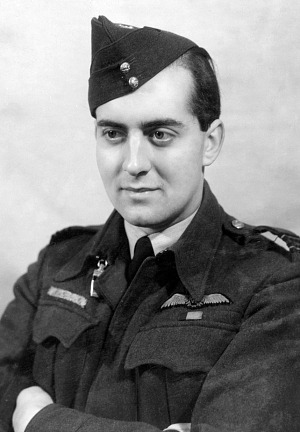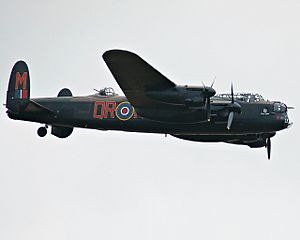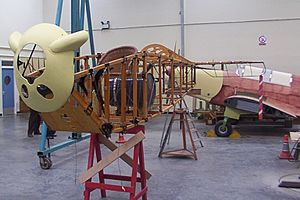Michael Beetham facts for kids
Quick facts for kids
Marshal of the Royal Air Force
Sir Michael Beetham
|
|
|---|---|

Beetham as a flight lieutenant in May 1944
|
|
| Born | 17 May 1923 London, England |
| Died | 24 October 2015 (aged 92) |
| Allegiance | United Kingdom |
| Service/ |
Royal Air Force |
| Years of service | 1941–1982 |
| Rank | Marshal of the Royal Air Force |
| Commands held | Chief of the Air Staff (1977–82) RAF Germany (1976–77) RAF Staff College (1970–72) RAF Khormaksar (1963–65) No. 214 Squadron (1958–59) |
| Battles/wars | Second World War
Aden Emergency Falklands War |
| Awards | Knight Grand Cross of the Order of the Bath Commander of the Order of the British Empire Distinguished Flying Cross Air Force Cross King's Commendation for Valuable Service in the Air |
Marshal of the Royal Air Force Sir Michael James Beetham (born May 17, 1923 – died October 24, 2015) was a brave pilot during the Second World War. He became a very important leader in the Royal Air Force (RAF) from the 1960s to the 1980s. As the head of the RAF, called the Chief of the Air Staff, he helped make big decisions during the Falklands War. When he passed away, Sir Michael was one of only six people to hold the highest rank in the RAF. He also held this top rank longer than almost anyone else.
Contents
Early Life and Joining the RAF
Michael Beetham was born in London, England, on May 17, 1923. He went to St Marylebone Grammar School. When he was a young man, he saw the Battle of Britain happening in the skies above him. This amazing sight made him want to join the RAF in May 1941.
RAF Career Highlights
Flying in World War II
After training to fly in the United States and Great Britain, Michael Beetham joined 50 Squadron. He flew a large bomber plane called an Avro Lancaster. He took part in the Battle of Berlin, flying 10 bombing missions over the city. During one mission over Augsburg, his plane lost an engine, but he managed to keep flying. He also survived the dangerous Nuremberg Raid, where many RAF planes were lost.

In February 1944, during a training flight, one of his plane's engines caught fire. Michael and his crew had to parachute out of the plane. He landed safely and became a member of the "Caterpillar Club," which is for pilots who have saved their lives by parachuting. During his time with 50 Squadron, he flew 30 missions into enemy territory. For his bravery, he received the Distinguished Flying Cross in June 1944.
After the War
After World War II ended, Michael Beetham continued his career in the RAF. In 1945, he joined No. 35 Squadron, which was chosen to do a victory fly-past and a goodwill tour of the United States. He was promoted to flight lieutenant in 1946.
Later, he worked on bringing new V-bomber planes into service. These were important planes for the RAF. He also saw open-air nuclear bomb tests in 1956. This experience made him believe that a nuclear war could not be controlled.
In 1959, as a wing commander, Michael Beetham was the pilot of the first plane, a Vickers Valiant bomber, to fly non-stop from the United Kingdom all the way to Cape Town, South Africa. This was a big achievement! He received the Air Force Cross for his excellent flying skills.
Leading the RAF
Michael Beetham continued to rise through the ranks. In 1963, he became the Station Commander of RAF Khormaksar in Aden, which was the RAF's largest overseas base at the time. He had to deal with security challenges as attacks against British forces began there.
He became an air commodore in 1966 and received the Commander of the Order of the British Empire award. He then held many important leadership roles, including leading the RAF Staff College.
Chief of the Air Staff
In 1977, Michael Beetham became the Chief of the Air Staff. This meant he was the professional head of the entire Royal Air Force. He worked to bring in new planes like the Panavia Tornado and to strengthen the RAF's reserve forces.
Towards the end of his time as Chief of the Air Staff, the Falklands War began. Michael Beetham was involved in the big decision to send a special military group to the South Atlantic to take back the Falkland Islands. He also came up with the idea for Operation Black Buck, which involved long-range bombing raids on Argentine positions in the Falklands. He served as Chief of the Air Staff for over five years, making him one of the longest-serving leaders in that role. In 1982, he was promoted to Marshal of the Royal Air Force, the highest rank.
Later Life and Legacy
Even after retiring from active duty in 1982, Sir Michael Beetham remained involved with the RAF. He was the President of the Society of Friends of the RAF Museum. The museum's special center for preserving aircraft is named the Michael Beetham Conservation Centre in his honor. He also led the Bomber Command Association.
In 2005, he took part in another fly-past over London, this time to celebrate 60 years since the end of World War II. He joined the crew of a Battle of Britain Memorial Flight Lancaster bomber.
Sir Michael Beetham also wrote forewords for several books and had a biography written about him called "Stay the Distance."
Sir Michael Beetham passed away on October 24, 2015, at the age of 92. The head of the RAF at the time, Sir Andrew Pulford, said that Beetham was "one of the greatest leaders the Royal Air Force has produced."
Personal Life
In 1956, Michael Beetham married Patricia Elizabeth Lane. They had one son and one daughter. Lady Beetham passed away in January 2016.



